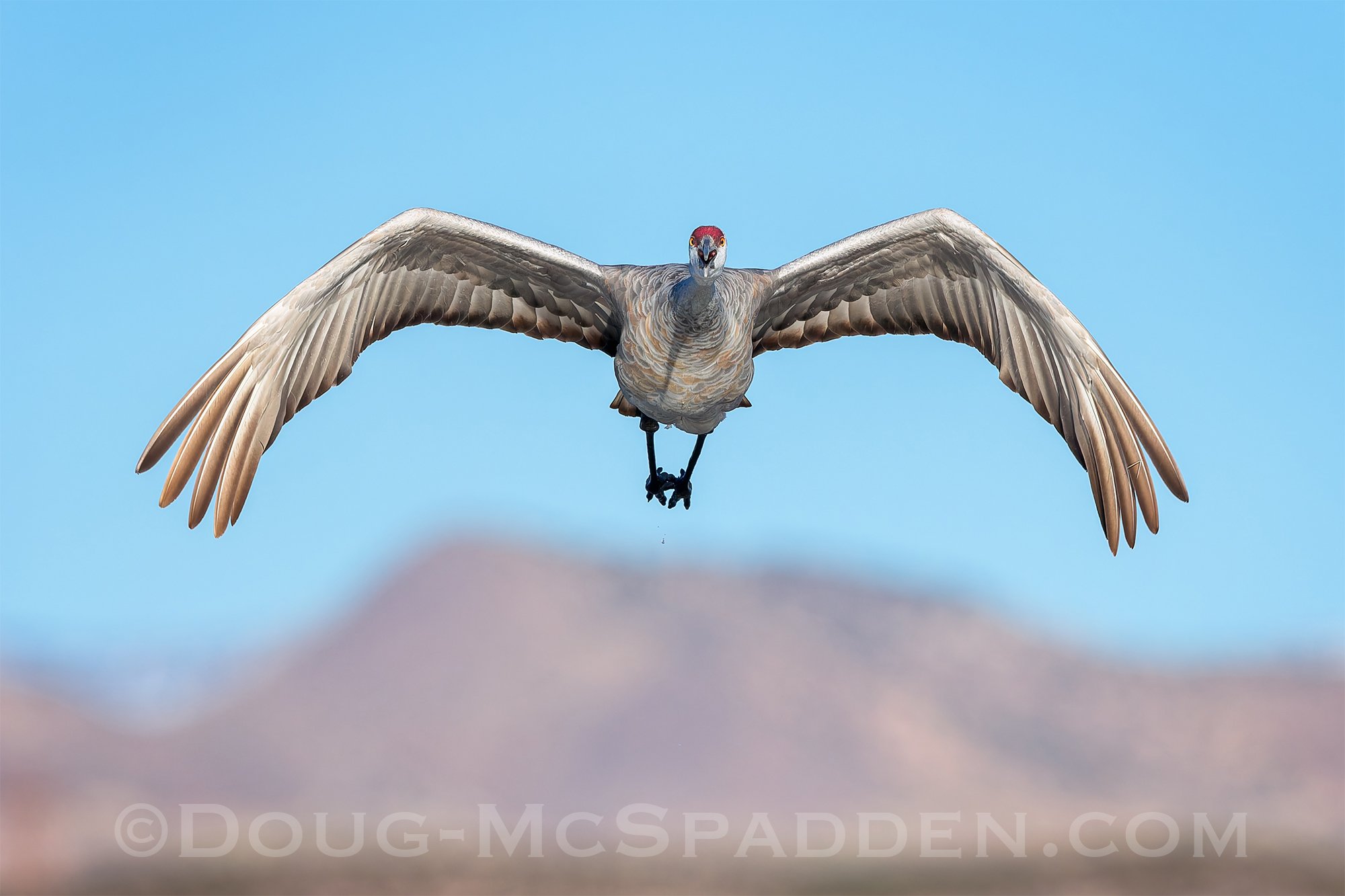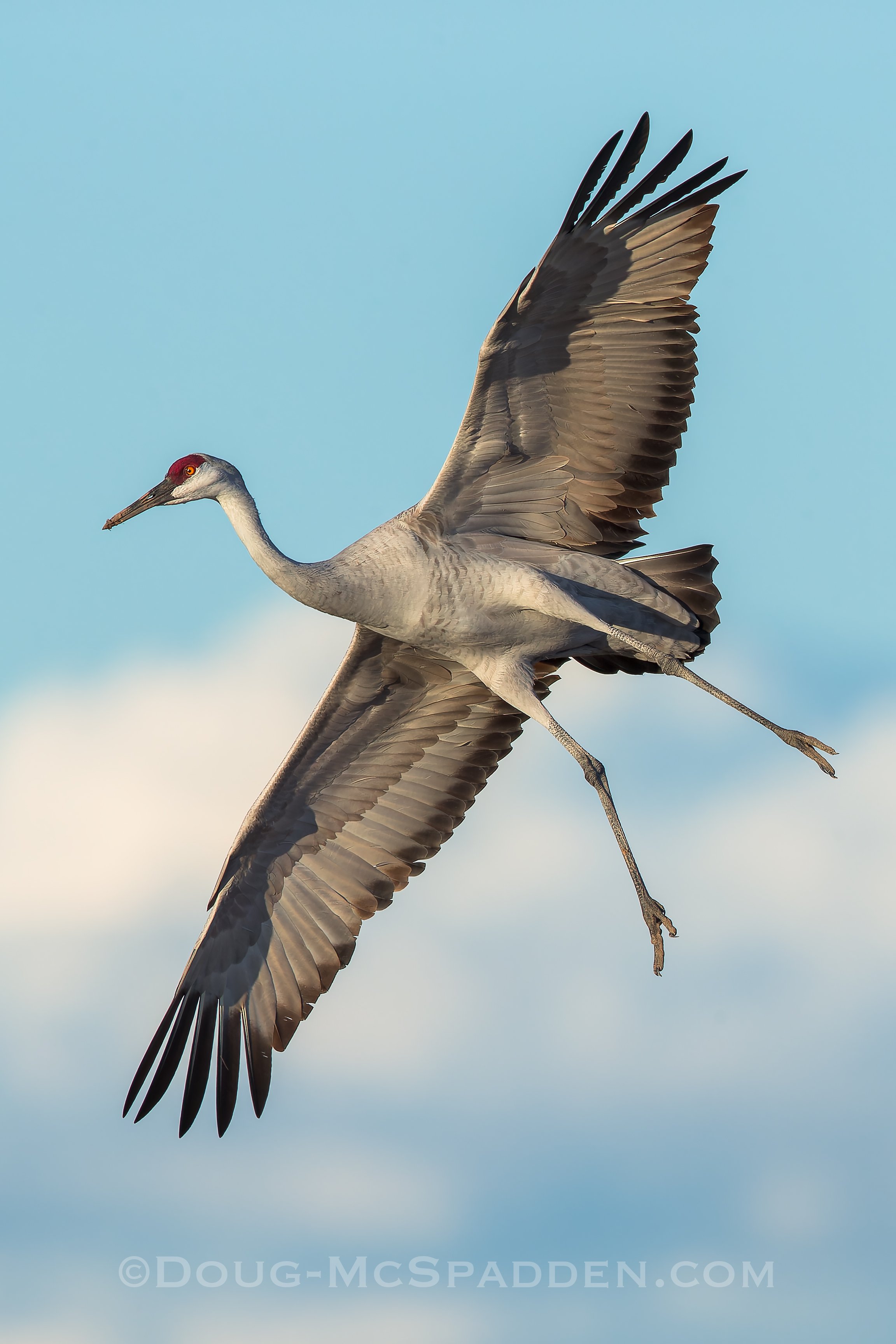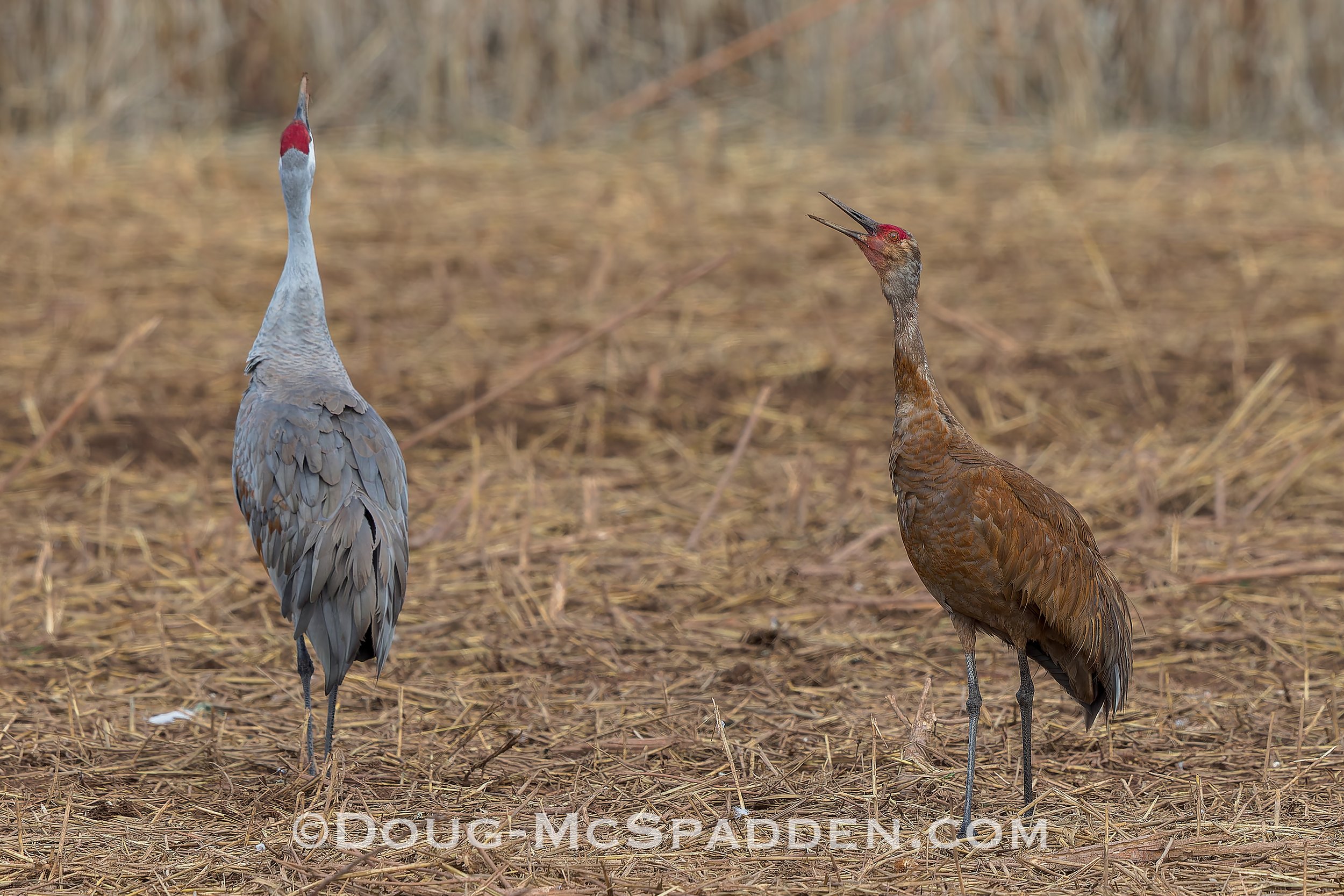Sorting Out Sandhills - Field ID
An introduction to the subspecies and field identification markers for Sandhill Cranes.
Until the 2010’s, Sandhill Cranes (Antigone canadensis) were grouped into 6 subspecies; three migratory, and three non-migratory. Subspecies are taxonomically distinct groupings to formally name them, but not distinct enough to prevent hybridization between the subspecies.
The three migratory subspecies were: Antigone canadensis canadensis (Lesser Sandhill), Antigone canadensis rowani (Canadian Sandhill), Antigone canadensis tabida (Greater Sandhill). The Fish and Wildlife Service sites two studies that finds there isn’t enough genetic differentiation between c. rowani and c. tabida and now groups both subspecies as c.tabida or Greater Sandhills. I will introduce the Greater and the Lesser Sandhill here.
The first clue that you might be looking at two different subspecies is by size. There can be some overlap with female Greaters and larger male Lessers, so the head shape, beak length and coloration may be definitive. Size is important for two reasons. The first is obvious differentiation in the field, but the second gives us a better picture of likely areas to find the different subspecies. Size plays a big role in how far a Sandhill can migrate. The Lesser Sandhills are more efficient due to their lighter weight and can fly longer distances. This subspecies is more common in the Central and Pacific flyways where its migration leads to arctic nesting grounds. The Greater Sandhills will make shorter migrations, an example being in the Rocky Mountain flyway from Southern New Mexico and Arizona wintering grounds to Montana, Alberta and other northern Rockies nesting locales.
Greater Sandhills stand 3.5 to 4.5 feet high with the males usually standing a bit larger than the females with weights of 10.7 and 12 pounds respectfully. Lesser Sandhills stand 2.5 to 3.5 feet high and weigh 7.3 to 8.3 pounds. With females being smaller than males. Wingspan for Lessers averages 5.5 feet and the Greater average 7.5 feet.
A Greater Sandhill Crane comes in for a landing. The average wingspan for the Greater Sandhill is 7.5 feet.
Overall size along with head shape and coloration along with beak length are good ways to differentiate the two subspecies in the field. Rather than try to describe the differences, David Sibley created drawings to differentiate the two subspecies.
In the picture below, the Lesser Sandhill is on the right and has a probable recessive gene that has caused the excessive rufus coloration. You can see the size difference, the rounded head shape and the shorter beak pretty clearly here.
A Lesser Sandhill (R) calls along with a Greater Sandhill (L) while wintering in New Mexico.
Juvenile Greater Sandhills can be about the same size as Lessers, but their overall coloration and calls are distinctive (see photo). The call of a juvenile is a higher-pitched whistle/screech rather than the lower pitched rattle call of the adult.


